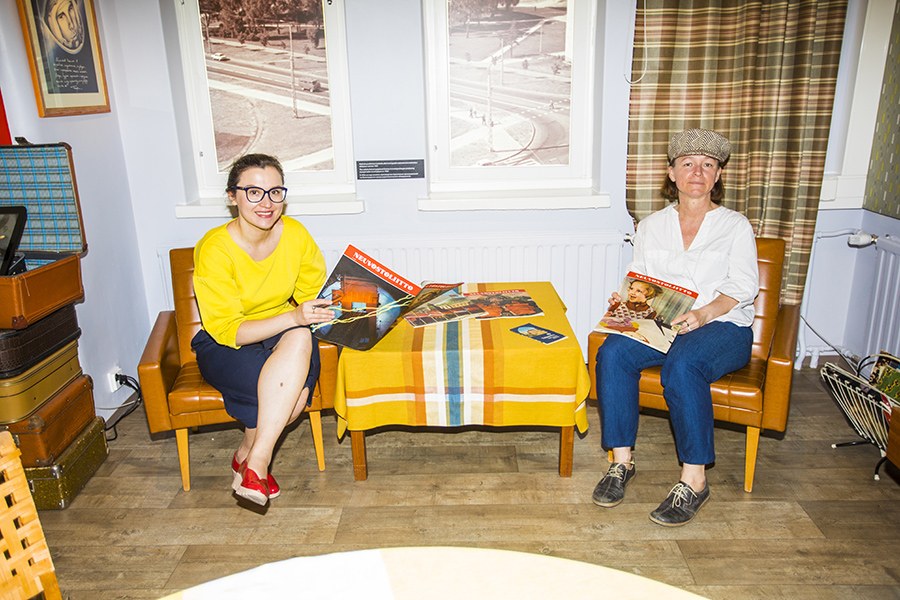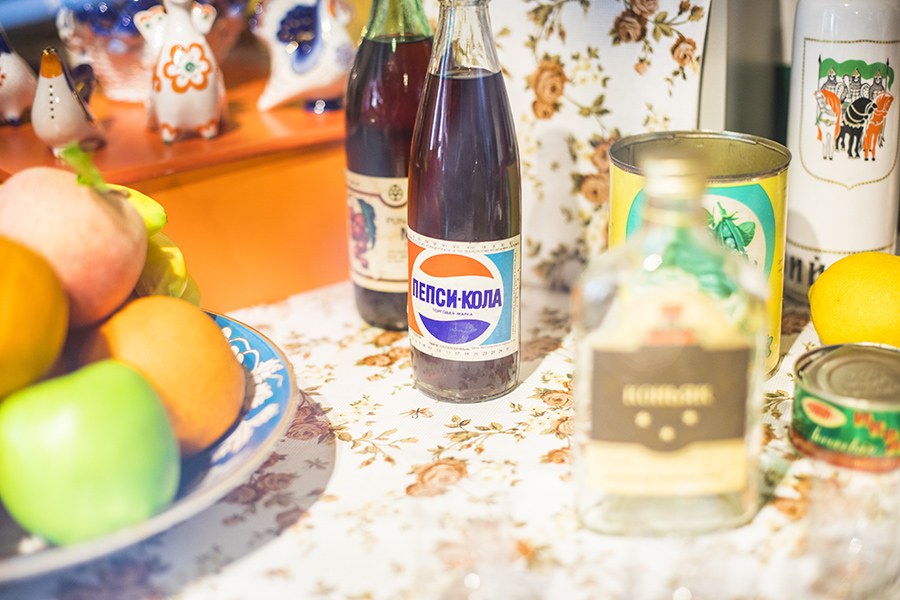Researchers assembled an exhibition of childhood memories from the Cold War

“More than thirty years after the fall of the Berlin Wall, the Cold War ideology continues to partition the world, most often in new guises linked to migration, labour issues, nationalism, populism, and growing inequalities, heightening tensions and halting dialogues,” Zsuzsa Millei and Nelli Piattoeva write in the exhibition brochure.
The exhibition is based on the ‘Re-Connect / Re-Collect’ research project coordinated by Tampere University, a collaboration between Professor Millei and Associate Professor Piattoeva from Tampere University and Professor Iveta Silova from Arizona State University. Research data were collected during workshops, which were held in 2019 and 2020 and brought together 77 researchers and artists from 31 countries in Europe, North and South America, Africa and Oceania, to participate in the collective biography work. Their memories have also inspired works of art, such as a drama in Hungary and an animated film in Germany. The results from the collective memory research are gathered in an open digital archive.
The name of the exhibition ‘Kaleidoscope – Children of the Cold War’ comes from the kaleidoscopic plurality of childhood memories, which encompass a range of identities, regions, religions, cultures, and history.
The researchers point out that childhood memories are always interpretations that have been shaped by our later life experiences.
We may remember momentous events in our lives such as childhood birthdays or the death of a loved one. Many memories are related to sensations, such as the smell of freshly baked pie made by our grandmother.
Collective memories tie the individual stories and individuals together. Memories are told to evoke experiences and emotions and to make us think not only about the past, but also about the future. People visiting the exhibition can participate in the project by jotting down their own memories on the postcards available at the exhibition.
There is no single correct Cold War childhood
Millei, professor of early childhood education at Tampere University, was born in Hungary, attended a kindergarten in the socialist country and earned her master’s degree there. Later, she moved to Australia, where she began to develop an interest in Cold War childhood memories as a researcher.
“Our intention is not to present a facsimile or a single correct version of childhood during the Cold War because there is no such thing. We present a whole range of childhood experiences from different places and at different times in socialist and post-socialist countries,” Millei explains.
Millei hopes that the exhibition will provide a diverse ensemble of Cold War childhood experiences as seen through a variety of objects and works of art.
“The main idea of the exhibition is to bridge the so-called East and West divide through childhood memories that tell of living similarities and connections. Through the exhibition, we also want to ask questions about today’s problems related to the climate crisis, the COVID-19 pandemic and migration,” Millei says.

Cold War experiences help to understand the present
The Cold War divided the world into two camps from the mid-1940s to 1991, when the Soviet Union collapsed, and the Eastern Bloc fell apart.
However, the researchers point out that the end of the Cold War did not end the division of the world. The former state socialist countries were expected to fully adapt to the capitalist economy and political ideals. Historically, both capitalist and socialist ideologies maintained the image of new tomorrows and endless development, which was also reflected in the lives of children.
The upheavals after the Cold War have created multiple problems for the generation of Millennials – i.e. those born between the early 1980s and the late 1990s – because they are the first generation whose prospects are more uncertain than those of their predecessors.
Childhood memories help to understand the Cold War era and related phenomena. The memories displayed in the exhibition tell of everyday experiences to which visitors can easily relate.
The planned economy made people recycle and repair
Under the socialist system, the economy and industrial production were guided by three- or five-year plans. The goods produced and their prices were determined by the state, not by the need or demand as in a market economy. The planned economy often led to a shortage of certain products and the overproduction of others.
A do-it-yourself culture blossomed because people used available materials to make things that were otherwise unavailable.
Repair, reuse, and recycling maintained their popularity even after the emergence of plastics and throwaway culture. Due to the lack of materials, handicrafts were often creative and unique. The inventive recycling of materials brought generations together in concrete ways when, for example, a child attended a party wearing an outfit pieced together from their grandmother’s old coat.
Socialist governments saw the mass collection of wastepaper and scrap as being the duty of citizens and an embodiment of a team spirit. Unfortunately, much of the collected materials never ended up recycled, but simply added to environmental waste.
After the Cold War, the responsibility for solving environmental problems has shifted from states and companies to individuals who must balance between the growth-creating consumer culture and environmental aspects.

Stimuli found in concrete jungles
World War II left many people homeless, and war-torn residential areas were replaced by prefabricated blocks of flats to alleviate the housing shortage. Concrete suburbs symbolised the modern society, and prefabricated homes provided homes for the new nuclear families.
Green areas, benches, and playgrounds were designed for the yards, but there was no time for them to grow because construction work was often delayed until the 1970s.
Thus, children were left to play among the carpet racks, bushes, and construction waste. Older children were expected to keep an eye on younger children.
Children created their own sub-cultures by making creative use of spaces: under-stairs cavities were a good place for a disco or listening to a banned radio station.
Concrete suburbs often turned into disreputable neighbourhoods populated by ethnic minorities and the poor. In childhood memories, however, they appear as fascinating environments full of endless possibilities. In Eastern Europe, these suburbs have maintained their popularity because the flats are affordable, and an abundance of parks and good public transportation add to their appeal.
Children were pawns in the political games
The introduction of polyethylene-based plastic in Eastern Germany revolutionised socialist toy production in the 1960s. Plastic symbolised the power and development of the socialist economy and its capacity to reform itself.
Toys were also used as propaganda tools. They reinforced the well-defined roles of children as selfless and productive citizens and workers and parents of the future. These predetermined roles were often forgotten when children started playing and inventing new uses for their toys.
Eastern Bloc countries strived to boost their industries and economies through state-led initiatives. Children were regarded as a key resource in building the equal and communal society of tomorrow. They were regarded as political players representing the new social system.
Sports and hobbies provided an effective means of nurturing children. Exercise not only increased stamina, but also shaped their outlook on life. Children themselves had little say in how their bodies were used or monitored.
Children were expected to be active. Most children in socialist countries had a hobby offered by the Pioneer movement and a plethora of sports and cultural clubs. Being selected for a representative team in a sport or hobby was regarded as a unique opportunity and a source of pride for the entire family.
During the Cold War era, the propaganda machinery of both socialist and capitalist states portrayed children as the hopes and heroes of tomorrow.
Children were also harnessed to official political interests and armed conflicts on both sides of the Iron Curtain. Children acted in the roles created by the machinery and rose to embrace the desired ideals, but they also saw the flaws and absurdities of the system. They dealt with and even challenged politics in their own way by mocking state symbols or re-decorating uniforms.
Text: Heikki Laurinolli
Photographs: Jonne Renvall
Memories of Everyday Childhoods
De-colonial and De-Cold War Dialogues on Childhood and Schooling





